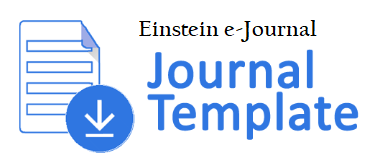GREEN-SYNTHESIZED Fe3O4/TiO2 ADSORPTION MATERIAL VIA COPRECIPITATION METHOD USING MORINGA OLEIFERA LEAF EXTRACT FOR THE DEGRADATION OF METHYLENE BLUE
DOI:
https://doi.org/10.24114/eins.v13i3.69416Abstract
Iron sand can be utilized as a raw material for the synthesis of Fe3O4 nanomaterials, which can be applied in various technologies such as wastewater treatment. The Fe3O4/TiO2 photocatalyst material was synthesized using the coprecipitation method with variations of FTMO2:1, FTMO1:1, and FTMO1:2, combined with Moringa oleifera leaf extract. The synthesized Fe3O4 powder from iron sand was mixed with TTIP and the leaf extract solution. The dried Fe3O4/TiO2 powder was then furnace-treated at 500 °C for 3 hours and characterized using XRD and UV-Vis. XRD results showed that the cubic crystal structure of Fe3O4 matched JCPDS No. 10–11032 in the 2θ range of 30.1°, 35.7°, 43.1°, 53.7°, and 57.2° with (hkl) planes of (220), (311), (400), (422), and (511). New diffraction peaks appeared at (101), (004), and (200), indicating the presence of TiO2 anatase phase crystals (JCPDS No. 21–1272). The calculated crystallite size decreased as the amount of TiO2 increased, due to the smaller atomic size of TiO2 compared to Fe3O4. This result indicates that Fe3O4/TiO2 synthesis was successfully achieved without altering the crystal structure. UV-Vis characterization with methylene blue at a wavelength of 663 nm showed differences in absorption values. The calculated band gap values using the Tauc Plot method increased from 2.36 to 2.38 eV. The degradation percentage of Fe3O4/TiO2 powder samples against methylene blue ranged from 99.55% to 99.38%. This result is consistent with the band gap values, where samples with lower band gaps demonstrated better degradation performance. The Fe3O4 material was successfully synthesized with TiO2, resulting in reduced band gap values and enhanced photocatalytic degradation capability of the Fe3O4/TiO2 nanocomposite.Downloads
Published
How to Cite
Issue
Section
License
Copyright (c) 2025 Ridwan Yusuf Lubis, Abdul Halim Daulay, Masthura Masthura

This work is licensed under a Creative Commons Attribution-NonCommercial 4.0 International License.
Authors who publish with this journal agree to the following terms:
- Authors retain copyright and grant the journal right of first publication with the work simultaneously licensed under a Creative Commons Attribution-Non Commercial 4.0 License (CC BY-NC) that allows others to share the work with an acknowledgement of the work's authorship and initial publication in this journal for non commercial purposes.
- Authors are able to enter into separate, additional contractual arrangements for the non-exclusive distribution of the journal's published version of the work (e.g., post it to an institutional repository or publish it in a book), with an acknowledgement of its initial publication in this journal.



